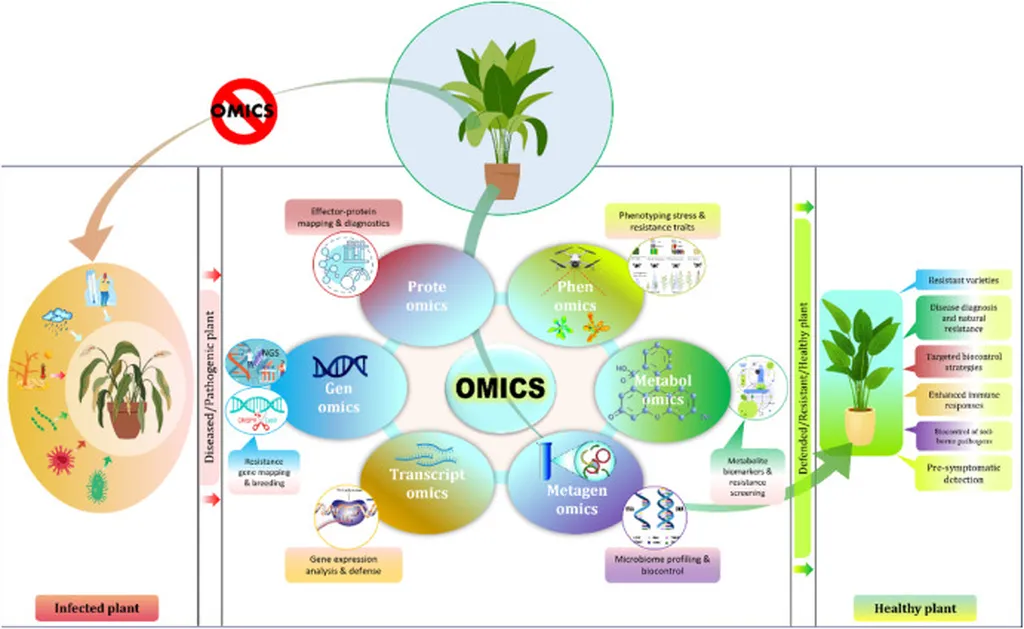In the ever-evolving landscape of agricultural technology, a groundbreaking review published in ‘Discover Plants’ (which translates to ‘Explore Plants’ in English) is shedding new light on the intricate dance between plants and pathogens. Led by Ravi Kumar from the Department of Floriculture and Landscape Architecture at the College of Horticulture, Sardar Vallabhbhai Patel University of Agriculture and Technology, the research delves into the transformative potential of OMICS-based technologies—genomics, transcriptomics, proteomics, and metabolomics—in understanding and managing plant diseases.
The study highlights how these advanced technologies have revolutionized the way scientists approach plant-pathogen interactions. By providing deep insights into molecular mechanisms, OMICS technologies enable the identification of critical pathways, defense mechanisms, and resistance genes. These findings are not just academic; they hold significant commercial implications for the agricultural sector, particularly in disease management and crop breeding.
“These approaches allow for the identification of critical molecular pathways, defense mechanisms, and resistance genes, which serve as valuable targets for disease management and crop breeding,” says Ravi Kumar, the lead author of the study. This newfound understanding could lead to the development of more resilient crop varieties, reducing the need for chemical pesticides and enhancing sustainable farming practices.
The integration of high-throughput sequencing and artificial intelligence (AI) has further accelerated the analysis of complex datasets. AI-driven platforms are now capable of predictive modeling of gene expression, protein interactions, and metabolite dynamics. These advancements support the discovery of beneficial microbial communities that can enhance plant immunity, offering a promising avenue for sustainable pest management.
However, the journey is not without its challenges. The study points out the need for better integration, standardization, and computational analysis of multi-omics data. Addressing these issues through AI and advanced computational frameworks will be crucial for translating molecular findings into actionable strategies for crop improvement.
The synergistic application of OMICS and AI holds transformative potential for advancing agriculture, improving crop resilience, and enhancing global food security. As Ravi Kumar notes, “The synergistic application of omics and AI holds transformative potential for advancing agriculture, improving crop resilience, and enhancing global food security.”
This research not only shapes our understanding of plant-pathogen interactions but also paves the way for future developments in the field. By leveraging these technologies, the agricultural sector can look forward to more efficient, sustainable, and resilient crop production methods. The insights gained from this study could very well be the catalyst for a new era in agricultural technology, benefiting farmers, consumers, and the environment alike.
As the world grapples with the challenges of climate change and food security, the findings from this review offer a beacon of hope. The integration of OMICS technologies and AI in plant-pathogen interaction studies is not just a scientific advancement; it’s a step towards a more sustainable and secure future for agriculture.

